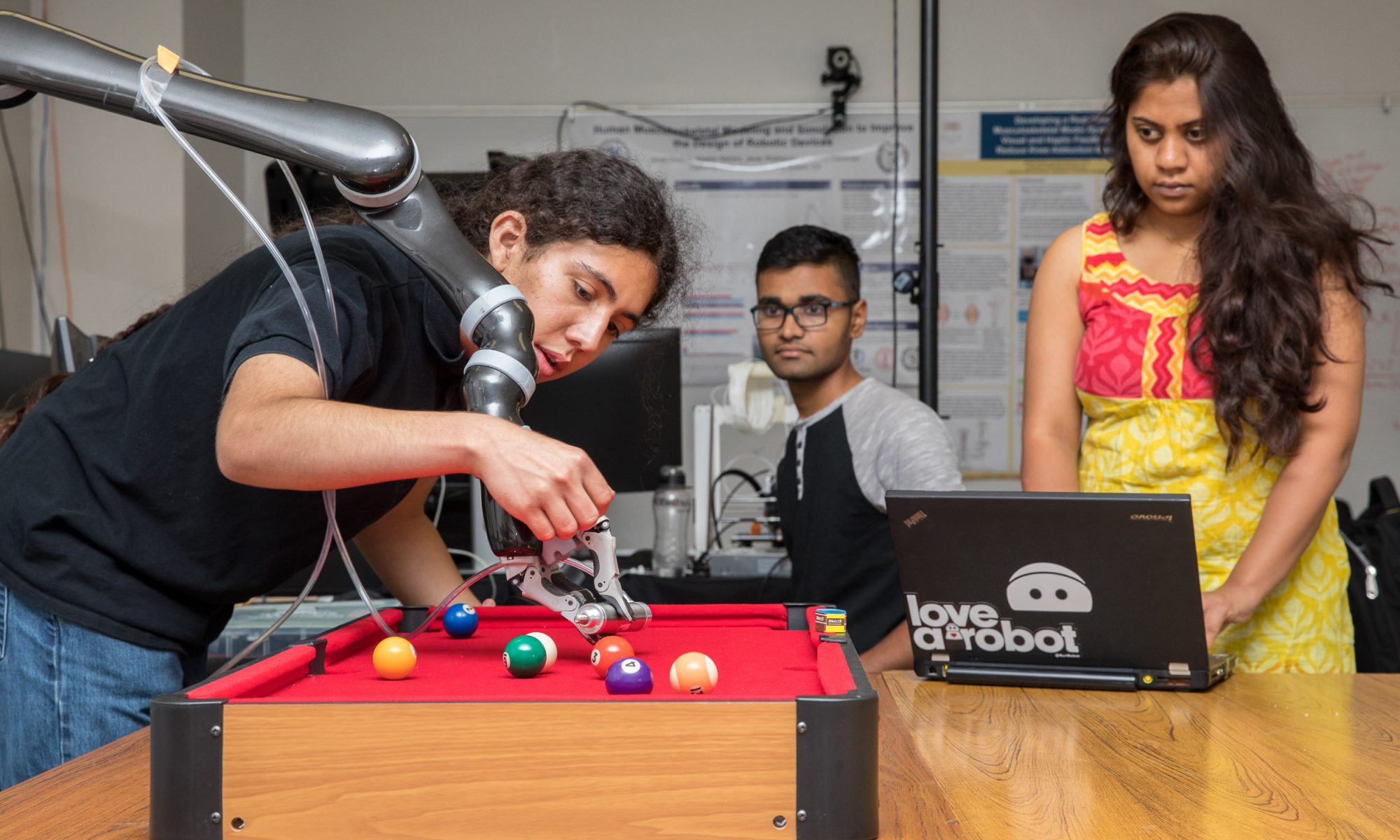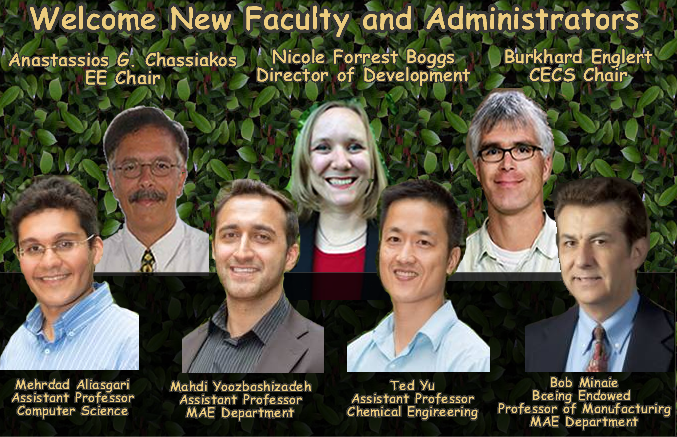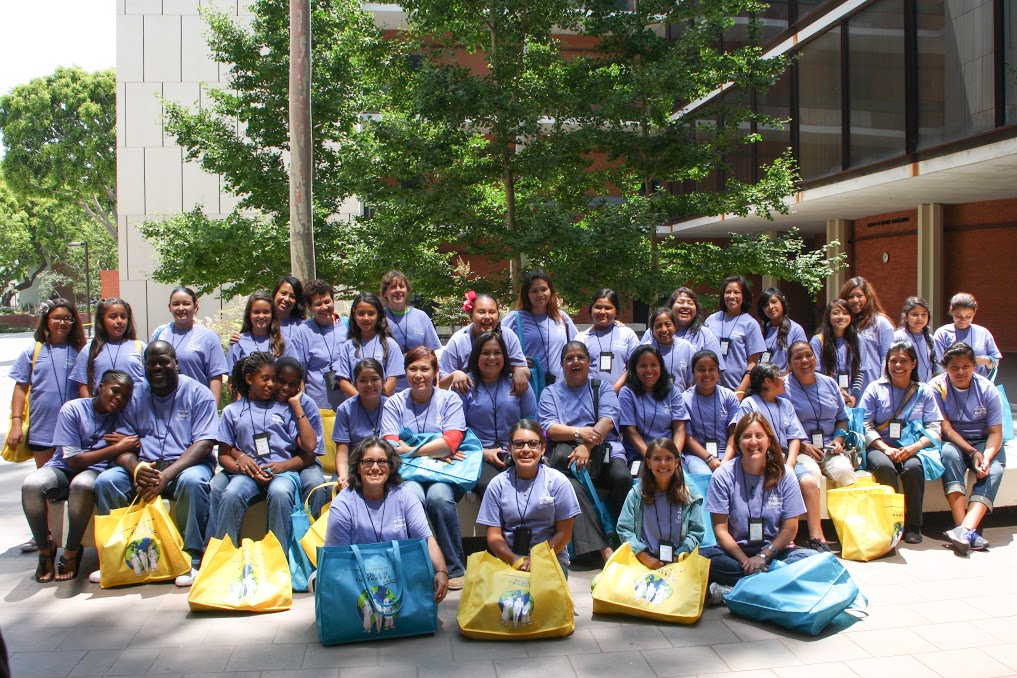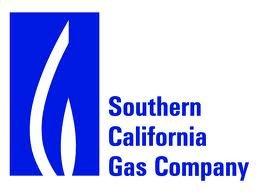The College of Engineering welcomed seven new faculty and administrators during the Fall 2013/Spring 2014 academic year.

Burkhard Englert
CECS Chair
Dr. Englert has been at CSULB since August 2003, and served as the COE’s graduate program coordinator from 2011-2013. He received his PhD from the University of Connecticut in 2000, and his areas of interest include distributed computing, computer security and transportation system simulation and modeling.

Anastassios G. Chassiakos
EE Chair
Dr. Chassiakos holds a PhD in electrical engineering from the University of Southern California, and been with the College of Engineering since 1992. He served as the director of the California Pre-Doctoral Program for the Office of the CSU Chancellor from 2009-2012, and has extensive experience as a consultant for aerospace manufacturers including Rockwell International and Northrop Corporation.

Nicole Forrest Boggs
Director of Development
Ms. Boggs comes to CSULB with over a decade of development experience. Most recently she served as Director of Development at Cal Poly Pomona where she was responsible for frontline fundraising in the College of Education and Integrative Studies, Student Affairs, University Library and Presidential Priorities. Prior to her work at Cal Poly Pomona, she was Director of Annual Giving at the University of La Verne. Nicole holds an MBA with a marketing emphasis and Bachelors in Economics.

Ted Yu
Assistant Professor
Chemical Engineering
Dr. Yu holds a PhD in Materials Science from Caltech and has had many years of experience conducting experimental research at Lawrence Berkeley Labs. His area of interest include alternative energy applications of fuel cells, batteries, solar cells, and artificial photosynthesis.

Mehrdad Aliasgari
Assistant Professor
Computer Science
Dr. Aliasgari holds a PhD in computer science and engineering from the University of Notre Dame, where he completed a dissertation in “Secure Computation and Outsourcing of Biometric Data.” He also received his masters degree in Computer Science and Engineering Notre Dame, and holds a bachelors in Electrical Engineering from Sharif University of Technology. His research interests include computer security and applied cryptography.

Bob Minaie
Boeing Endowed Professor of Manufacturing
MAE Department
Dr. Minaie holds a Ph.D. in mechanical engineering from the University of Minnesota. His research areas include manufacturing, materials, and mechanics including the use of advanced composites, thin films, and multifunctional nanostructured materials for aerospace, energy, green manufacturing, structural health monitoring, fuel cell, and transportation applications. His research has been supported at a significant level by NASA, ONR, AFOSR, DOE, NSF, and industry. Close collaboration with industry and providing leadership for university-industry-government teams in conducting interdisciplinary and multi-investigator research have been integral parts of his activities. Prior to joining CSULB, he served on the faculty of Wichita State University.

Mahdi Yoozbashizadeh
Assistant Professor
MAE Department
Dr. Mahdi Yoozbashizadeh holds a PhD in Industrial Engineering with a focus in Manufacturing Engineering from USC and has had six years of experience both as a postdoctoral fellow and research assistant conducting experimental research in the Additive Fabrication and Manufacturing Labs at USC. His research interests include powder metallurgy, 3D printing, metallic part fabrication, rapid prototyping, CAD/CAM and design of experiments.





